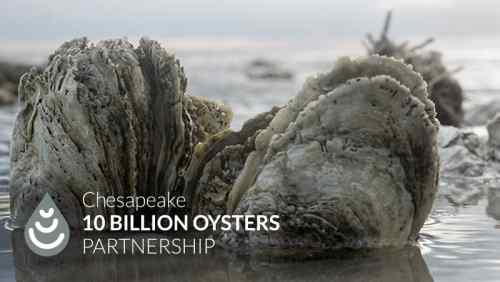Chesapeake Oyster Alliance
Washington College joins the Chesapeake Oyster Alliance, an ambitious initiative to fully restore the Bay’s oyster population by 2025.

Washington College today joined the launch of the Chesapeake Oyster Alliance, a collaborative effort to add 10 billion oysters to the Bay by 2025. WC is the only liberal arts college in Maryland among the dozens of participants in Maryland and Virginia, which include the University of Maryland's Center for Environmental Science, the Virginia Institute of Marine Science, the Coastal Conservation Association, the National Aquarium in Baltimore, regional river associations, watermen, aquaculturists, and NGOs.
This broad collaboration aims to fully restore the keystone species, which as a filter feeder is historically vital to improving the Bay's water quality, as well as providing the foundation for a sustainable fishery. The effort will also draw new constituencies to the restoration effort and drive economic benefits region-wide to accelerate the oyster's recovery.
“This kind of ambitious yet achievable goal is precisely what is needed in so many of our environmental restoration efforts,” says John Seidel, Director of Washington College's Center for Environment & Society (CES). “To realize such a lofty objective, to have real impact, we need an all-hands-on-deck approach. We at Washington College will do everything we can to help meet the partnership's goal, using the power of bivalves to filter the Bay's waters.”
As filter feeders, oysters are the Chesapeake's most powerful indigenous weapon in the fight to clean the Bay, and only with a healthy oyster population is a restored Bay possible. The Chesapeake Bay Program mandates 10 restored tributaries by 2025, and thanks to state and federal agencies' large-scale efforts to restore those tributaries, improvements in water quality, increasing disease resistance, growth of aquaculture on leased bottom, and scientific management of wild harvest, the oyster population has been growing. Still, it's unlikely these efforts will meet the Bay Program's objective or fully restore oyster populations Bay-wide.
The Chesapeake Oyster Alliance aims to push this effort even further in multiple ways, among them developing opportunities to expand and improve current restoration efforts; supporting science-based management of the public fishery to increase the number of oysters on public bars while investing in more bottom rehabilitation and planting to make the oyster industry more sustainable; and continuing to support and grow the aquaculture industry throughout the Bay while creating structured habitat for commercial and recreational fisheries.
“By generating new partnerships and sparking innovation, we hope this coalition will accelerate efforts that already show tremendous promise for the Bay's oyster populations,” says Allison Colden, the Maryland fisheries scientist at the Chesapeake Bay Foundation, which is helping to coordinate the partnership.
At Washington College, students, faculty, and staff have been working for years on projects related to oyster restoration, Seidel says. Among the College's programs:
CES coordinated the Marylanders Grow Oysters program on the Chester River, providing oyster cages and spat to shoreline residents who raised the oysters that CES then planted on bars in the area.
- CES was part of an award-winning project to restore the shoreline on Hail Point in Eastern Neck National Wildlife Refuge. Working with the National Aquarium in Baltimore and state and federal partners, CES provided the oysters that formed a living reef to protect this fragile habitat from wave damage.
- The College's Chester River Watershed Observatory monitors water quality and maps bottom habitat, helping to promote the health of oysters and many other species.
- Every fall, the Chesapeake Semester exposes young leaders to the power of oysters as a vital part of the ecosystem and as an iconic species, through meeting with watermen, aquaculturists, and studying biology and oyster restoration efforts around the Bay.
For more information, visit Chespeake Oyster Alliance.